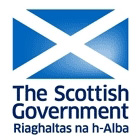Scottish National Dictionary (1700–)
Hide Quotations Hide Etymology
About this entry:
First published 1974 (SND Vol. IX).
This entry has not been updated since then but may contain minor corrections and revisions.
Quotation dates: 1795, 1882-1937
[0,0,0,0,0,0,0,0,0,1,0,0,0,0,0,0,0,0,1,1,1,1,1,1,0,0,0,0,0,0]
TIRL, n.2 The device, serving the purpose of a wheel, in a horizontal water-mill, consisting of a hub or nave fitted with a number of oblique wooden vanes which is revolved by the force of the mill-stream passing through them and transmits the power through the spindle of the hub to the millstone above (Sh. 1866 Edm. Gl., 1904 G. Goudie Antiq. Shetland 256–61, 1914 Angus Gl., Sh. 1972). Obsol.Sh. 1795 Stat. Acc.1 V. 193:
The tirl. A round piece of wood, about 4 feet in length, and fitted with 12 small boards, in the same manner as the extremity of the exterior wheel of an ordinary mill, with a strong iron spindle fixed to its upper end, supplies the place of a wheel in these mills. The tirl occupies the same situation under this mill as the trundles in the inner part of an ordinary mill; and it performs the same office.Sh. 1882 Gentleman's Mag. (March) 370:
Dey said 'at da Nyugl wid stop da water mills. He wid grip hed o' da fedirs o' da tirl an' stop da mill.Ork. 1909 Old-Lore Misc. II. iii. 131:
When the tirl refused to go, [he] would take a “teengs o' brands” and run out and throw it underneath in the water, where it came boiling out from the tirl, in the dark evening, to make “knappy” — a trow or water spirit — let go his hold of the wheel.Sh. 1937 J. Nicolson Restin' Chair Yarns 76:
The building consisted of an “upper hoose” and an “under hoose”. The latter contained the “tirl”, an upright barrel-shaped contrivance, having slanting wooden blades. The tirl was connected with the upper millstone by means of an iron spindle and was revolved by the water descending through a chute underneath the mill.


